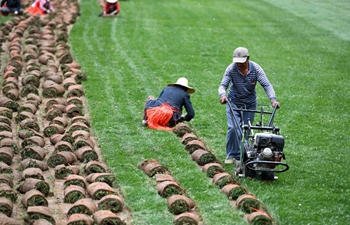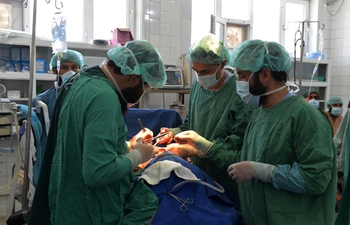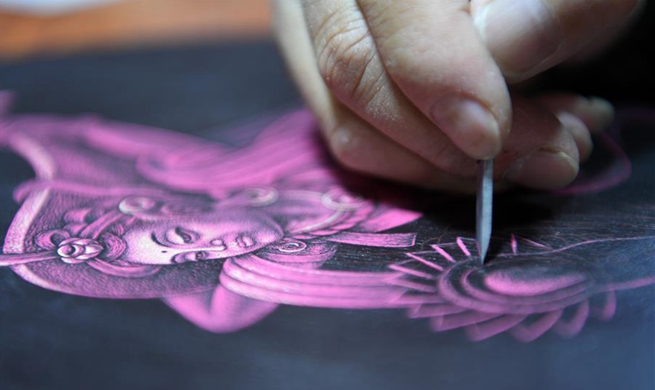CHICAGO, May 7 (Xinhua) -- Researchers at Washington University School of Medicine in St. Louis and Umea University in Sweden have found a compound that prevents and even reverses resistance to isoniazid, the most widely used antibiotic for treating tuberculosis.
Tuberculosis is caused by the bacterium Mycobacterium tuberculosis. Once inside the body, the bacteria morph into a tougher form that can withstand more stress and is harder to kill. Rather than look for new and better antibiotics, the researchers looked for compounds that prevent the bacteria from toughening up. When put in a low-oxygen environment to mimic the stressful conditions TB bacteria encounter inside the body, the bacteria come together and form a thin film called a biofilm that is resilient to not only low-oxygen conditions but also to antibiotics and other stressors.
The researchers screened 91 compounds that share a core chemical structure that inhibits biofilms in other bacterial species. They found one compound called C10 that did not kill the TB bacteria but prevented them from forming a biofilm.
Further experiments showed that blocking biofilm formation with C10 made the bacteria easier to kill with antibiotics and even curbed the development of antibiotic resistance.
Moreover, the researchers needed only a fraction of the amount of isoniazid to kill the TB bacteria when C10 was included than with isoniazid alone.
Usually one out of 1 million TB bacteria spontaneously become resistant to isoniazid when grown under typical laboratory conditions. But when the researchers grew TB bacteria with isoniazid and the compound, the drug-resistant mutant bacteria never arose.
More surprisingly, the compound even reversed drug resistance, the researchers found. TB bacteria with mutations in the gene katG can withstand isoniazid treatment. But such bacteria die when treated with isoniazid plus the compound. The bacteria had not lost their genetic resistance, but they'd lost the ability to survive when exposed to isoniazid, as long as it was given alongside C10.
"This was a totally unexpected finding," said co-senior author Christina Stallings, an associate professor of molecular microbiology at Washington University School of Medicine. "We had no idea we would be able to reverse drug resistance. But this could mean that with all those millions of isoniazid-resistant TB cases, if we use something like C10, we could give people the option of using isoniazid again."
This study was conducted on bacteria growing in a lab, and therefore is not ready to be used in people or even tested in animals. The researchers are still figuring out whether the compound is safe and how it might be processed by the body.
The research was published Monday in Proceedings of the National Academy of Sciences.

















